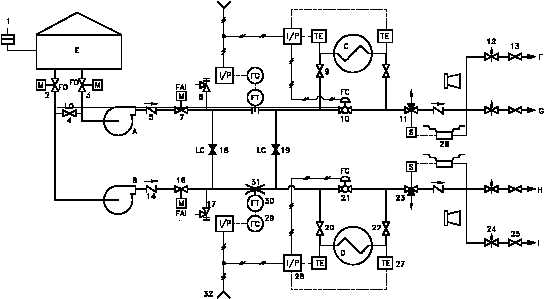INTRODUCTION TO THE TYPES
DOE-HDBK-1016/1-93
Introduction To Print Reading
OF DRAWINGS, VIEWS, AND PERSPECTIVES
Figure 6 Example P&ID
INTRODUCTION TO THE TYPES OF DRAWINGS,
VIEWS, AND PERSPECTIVES
To read a drawing correctly, the user must have a basic understanding of the
various categories of drawings and the views and perspectives in which each
drawing can be presented.
EO 1.5
LIST the five drawing categories used on engineering drawings.
Categories of Drawings
The previous chapter reviewed the non-drawing portions of a print. This chapter will introduce
the five common categories of drawings. They are 1) piping and instrument drawings (P&IDs),
2) electrical single lines and schematics, 3) electronic diagrams and schematics, 4) logic diagrams
and prints, and 5) fabrication, construction, and architectural drawings.
Piping and Instrument Drawings (P&IDs)
P&IDs are usually designed to present functional information about a system or component.
Examples are piping layout, flowpaths, pumps, valves, instruments, signal modifiers, and
controllers, as illustrated in Figure 6.
PR-01
Rev. 0
Page 10

